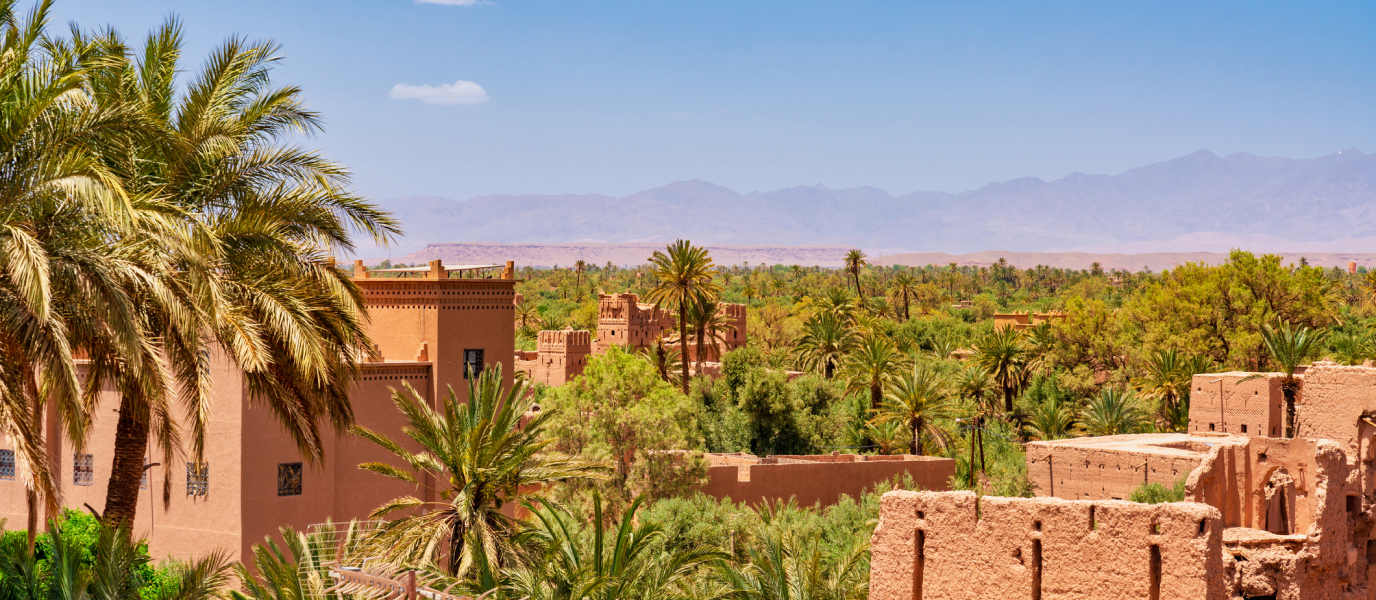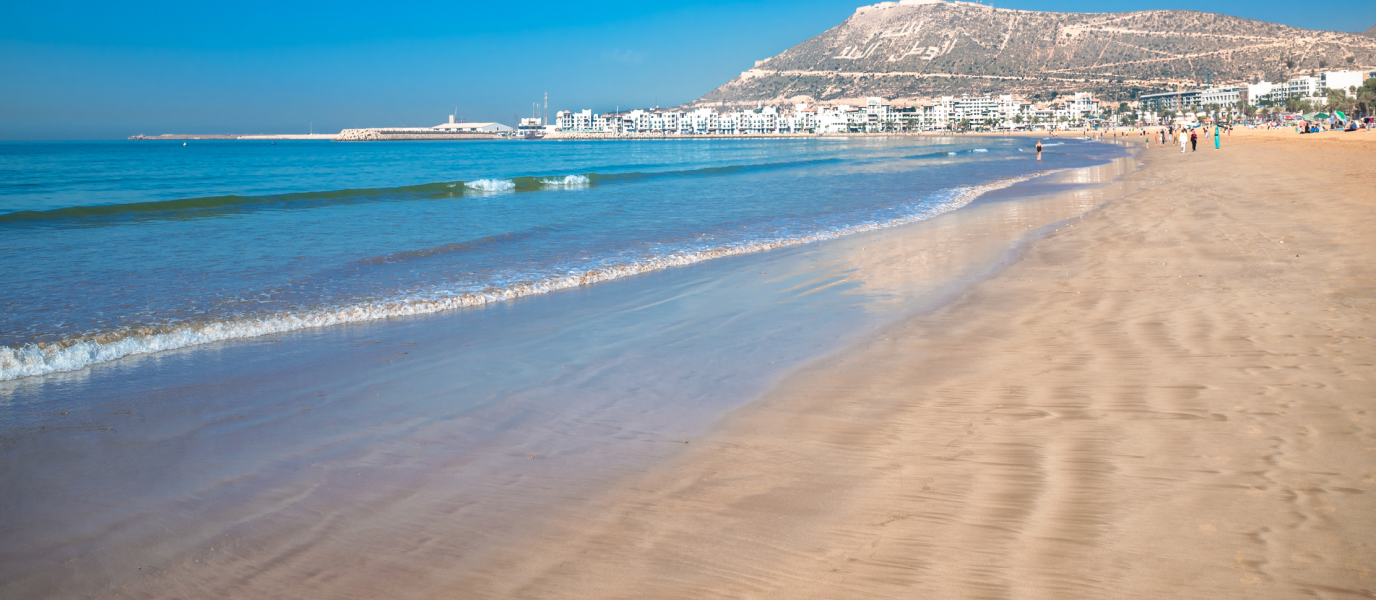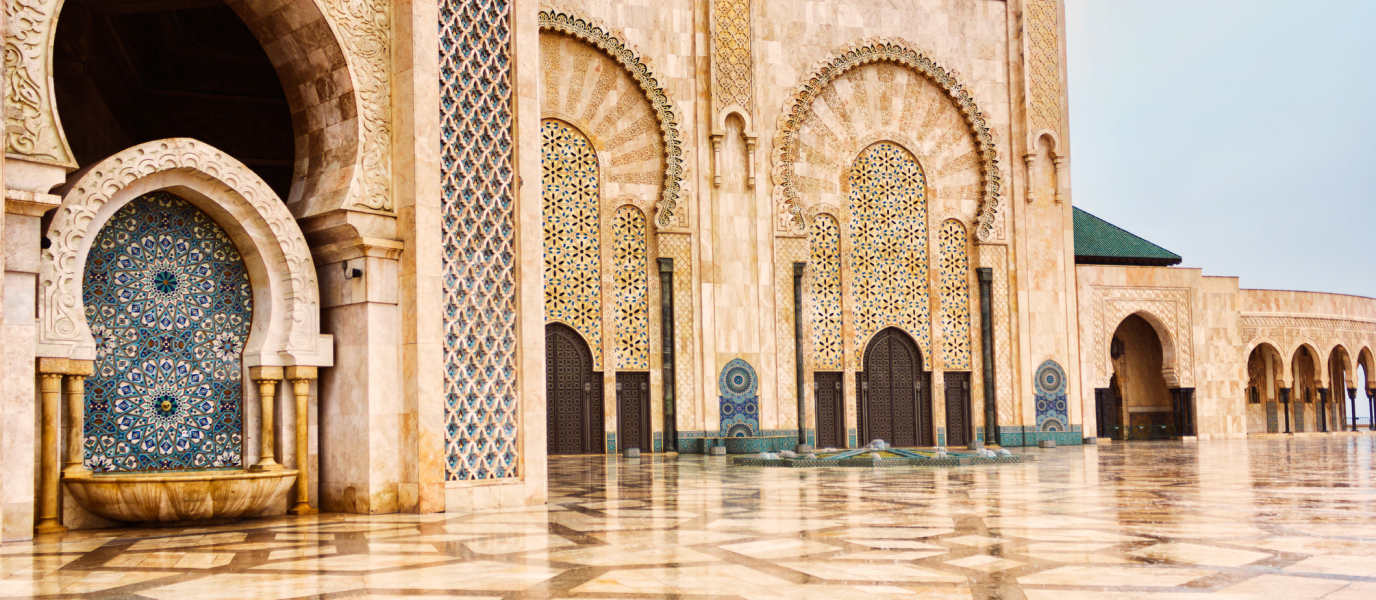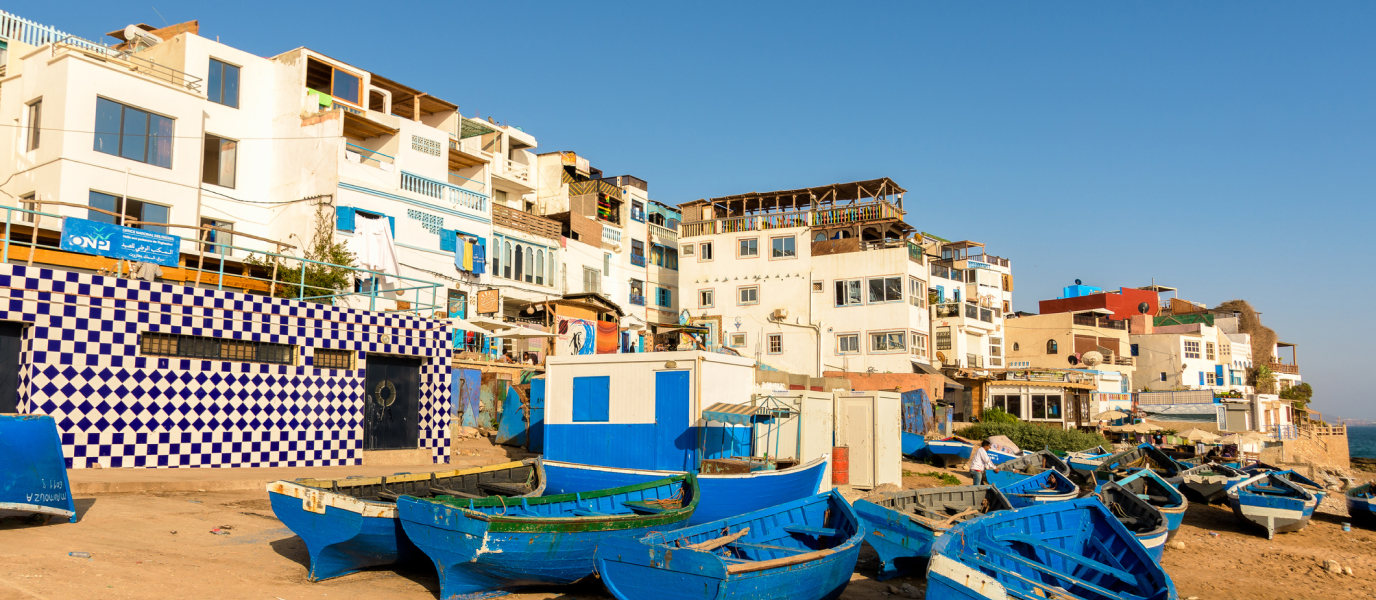Skoura palmeraie or palm grove is the largest oasis in the Dades Valley (internal link) and lies at the foot of the Atlas Mountains. It’s a giant grove of trees in the middle of the desert with over 70,000 palm, fig, almond and pomegranate trees. This post will reveal what there is to see in Skoura, a landscape straight out of The Arabian Nights.
Skoura palmeraie: an oasis in the middle of the desert
Skoura palmeraie is like a miracle in the heart of the desert: it’s hard to comprehend how such a lush place could emerge, as if out of nothing, in such an arid area. The answer lies in the dozens of channels and canals that are fed by the Hajaj and Madri rivers, making this land highly fertile. These two rivers flow with water from the highest mountains in the High Atlas; their course isn’t consistent but they’re extremely wide and it’s enough to fill the aquifers in the surrounding areas.
The modern city of Skoura sits on a far side of the oasis, but the original population of this zone is scattered across various villages throughout the length and breadth of the palmeraie. Seen from afar, what most catches your eye in this landscape are dozens of kasbahs. These ancient adobe fortresses, which served as family residences and fortifications against attacks, are one of the main attractions of the Dades Valley.
Skoura is in the middle of the Route of a Thousand Kasbahs, a road that joins Ouarzazate and Tinehrir and is hugely popular among travellers who come to Morocco with a sense of adventure. Each year, hundreds of 4x4s drive along this road; it’s dotted with ancient fortresses and gives visitors an idea of what life was like in Morocco three to four centuries ago.
Nothing is known for certain, and you have to put your trust in oral tradition, but it seems as though the Skoura settlement was formed in the 17th century when sultan Moulay Ismail ordered several fortresses to be built in the area to defend it against enemy incursions.
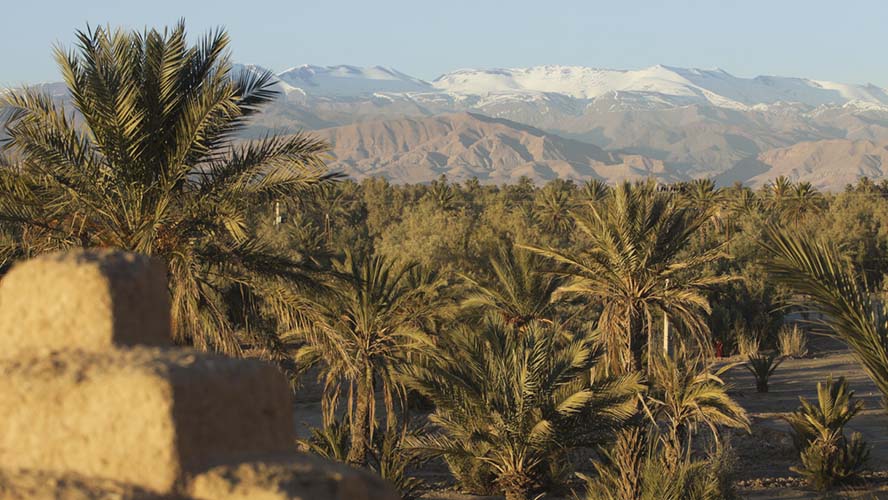
What to see in Skoura: the most interesting kasbahs
Among the many kasbahs that are scattered across Skoura palmeraie, the star attraction is definitely Kasbah Amridil, one of the most interesting and best conserved in the entire Dades Valley. You may feel a certain dejá vu when you visit it – the feeling that you’ve seen its outline somewhere before. And with good reason: it features on old 50-dirham notes. It’s also been a film location on several occasions and can be spotted in famous films such as Lawrence of Arabia and Ali Baba and the Forty Thieves.
Kasbah Amridil was built in the 17th century by a local family, the Nassiri, whose descendants still own it today. The original centre consisted of eight homes set around a central passageway. The exterior façades formed a perimeter that was marked by defensive towers. The kasbah is well conserved and exploring its interior feels like travelling back in time; visitors can get a sense of what life was like three centuries ago.
Many of the structures in the Kasbah Amridil have been restored and it’s possible to go inside and see wells, bread ovens and even an old press for making olive oil. The Kasbah Amridil has undergone numerous modifications and expansions over the centuries. Today, one of these annexes is a riad that is a great option if you’d like to spend the night. You can visit the entire complex, hiring the services of one of the guides you’ll find at the entrance gate.
One of the most fascinating rooms in the kasbah is the Audience Hall, where the owner of the fortification, who was also the feudal lord of Skoura palmeraie, received local residents to settle conflicts and deal out justice.
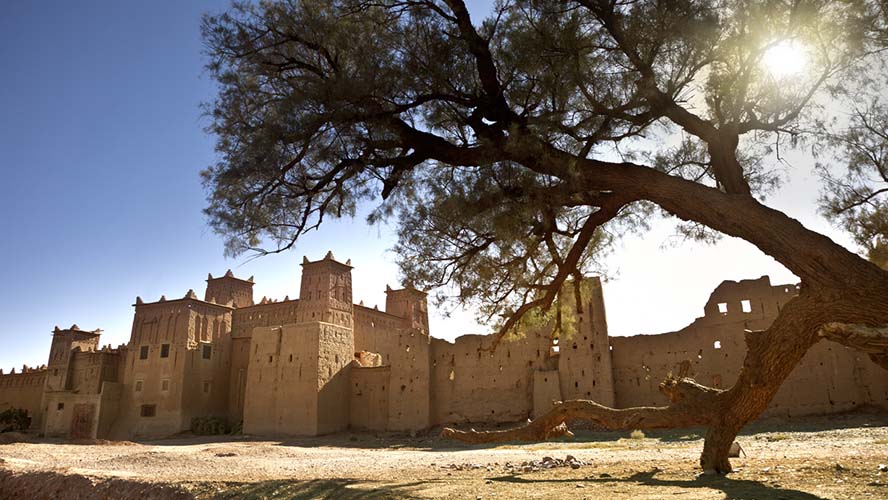
Kashba Amridil
Kasbah Ait Abou
Kasbah Amridil is the most famous and tourist-orientated kasbah in Skoura palmeraie but it’s not the only one that can be visited. Kasbah Ait Abou is found in the north zone of the palmeraie, next to Tajanal village, and it’s the highest in the region. It was built many years after Amridil and dates from the beginning of the 19th century; it’s also a group-owned complex and has housed several families since it was built, a common model across the oasis.
At Kasbah Ait Abou, the extra buildings and annexes that were built by resident families were added upwards, vertically, giving it its distinctive height. It also contains a hotel and is perfect for travellers who want to get away from the more touristy and busy parts of Skoura palmeraie.
The palmeraie is also the perfect place to lose yourself on a long walk amid its abundant plant life and get a break from the (sometimes overwhelming) hustle and bustle of Moroccan cities. The numerous hotels in the area rent out bicycles, or you can book a horse ride to explore the endless paths and hidden spots within the immense oasis.
Qué ver cerca de Skoura en tu viaje
Ouarzazate, el Hollywood marroquí
Una visita muy recomendable desde Skoura es Ouarzazate (o Uarzazate), que se encuentra a 40 kilómetros, aproximadamente 45 minutos en coche. Esta ciudad, rodeada de montañas, se suele identificar como la puerta del desierto de Marruecos. También es un lugar de tránsito para quienes emprenden la ‘Ruta de los oasis’. Y quizás el motivo por el que atraiga últimamente a más viajeros es por albergar estudios de cine. De hecho, hay quienes la llaman el “Hollywood marroquí”. Dichos estudios se pueden visitar, así que es la excursión perfecta para cinéfilos y amigos de las redes sociales, ya que allí tendrán muchos decorados donde hacerse selfis.
Además de buscar las localizaciones de ‘Juego de tronos’ o de otros filmes, no dejes de recorrer su entorno urbano con la plaza de Mouahidine, el mercado o su zoco de artesanía.
Kasbah de Taourirt
A las afueras de Ouarzazate se sitúa la Kasbah de Taourirt, como tiene horario de entrada y salida (de 8 de la mañana a 6.30 de la tarde) debes tenerlo en cuenta a la hora de organizar la visita. Estéticamente esta fortaleza de adobe es una maravilla, con sus torres almenadas ornamentadas. Se cree que fue construida en el siglo XVIII por la tribu glaoui en la vieja ‘Ruta del oro’ que unía Tombuctú con Marrakech. Es recomendable realizar una visita guiada en el interior para ver los espacios privados de la dinastía glaoui. Y si te interesa la artesanía, no te vayas sin comprar alguna pieza, hay un centro donde fabrican y venden bonitos objetos de barro, alfombras, etc.
Ksar de Ait Ben Haddou
Otra visita que es una maravilla es la del Ksar de Ait Ben Haddou. Esta ciudad fortificada se encuentra a 30 kilómetros de Skoura y la entrada a la misma es gratuita. Gracias a su arquitectura fue declarada Patrimonio de la Humanidad por la Unesco en 1987. La imagen en la lejanía, adaptándose a la colina que tiene tras de sí y con el río Ounila a sus pies, es inolvidable. Como también lo son las vistas que se obtienen desde su punto más elevado.
Su belleza, el entramado de sus calles, sus murallas de adobe y las espigadas torres no han pasado desapercibidas al cine, ya que aquí se han rodado decenas de películas. Desde Lawrence de Arabia (1962) a Gladiator (2000) o La reina del desierto (2015).
Oasis de Fint, un vergel oculto
Cuando ya los ojos se han adaptado al juego de tonos ocres que depara la zona más desértica de Marruecos, aparece el oasis de Fint como una ensoñación. Este vergel lleno de palmeras, y con la codiciada agua a sus pies, se sitúa a unos 10 kilómetros de Ouarzazate (y a unos 50 de Skoura). Lo más aconsejable es dejar el coche en las inmediaciones (hay una zona de aparcamiento) y recorrer todo su contorno, incluso puedes acercarte al pueblo caminando. Los vecinos de este lugar son muy hospitalarios, seguro que no se molestarán si curioseáis un poco su forma de vida. También cuentan con una artesanía muy bonita, así que incluso se puede colaborar un poco en su economía familiar.




































































